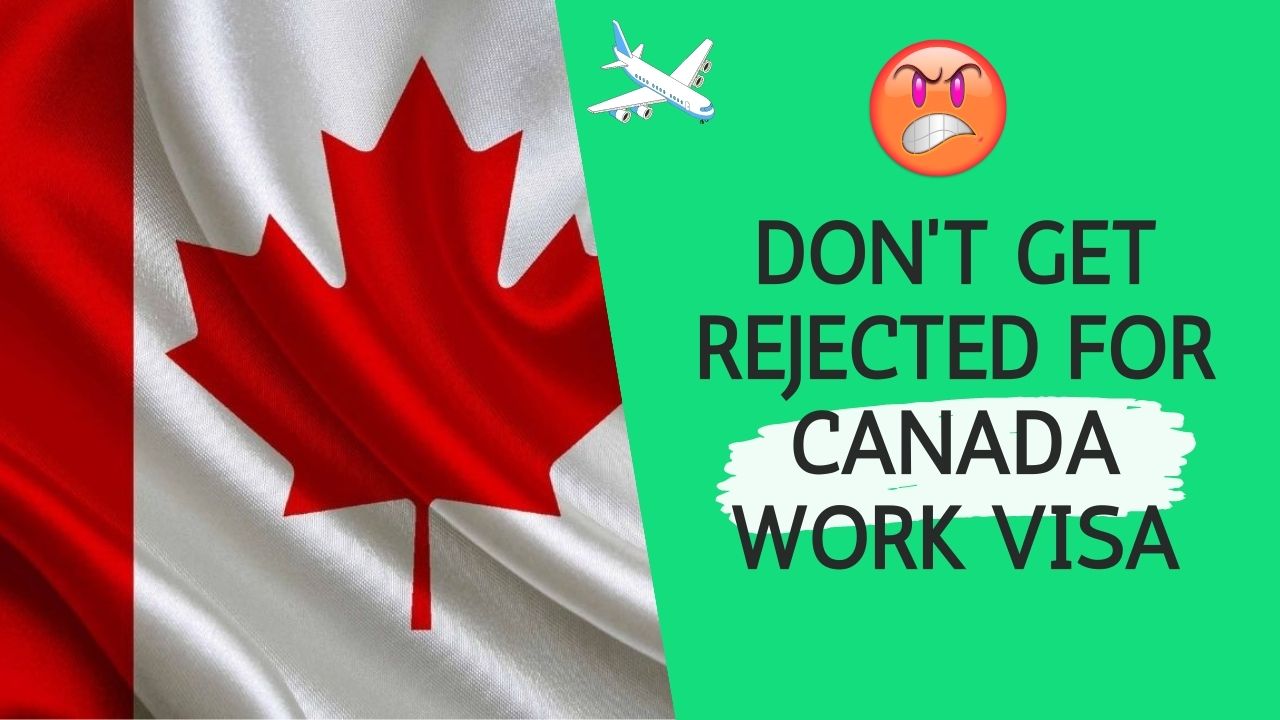🇨🇦 Don’t Get Rejected for Canada Work Visas: Everything You Need to Know Before Applying
Applying for a Canada work visa can be a life-changing step. But many applicants face rejection due to avoidable mistakes. Whether you’re applying under the Temporary Foreign Worker Program (TFWP) or the International Mobility Program (IMP), understanding the requirements upfront can significantly boost your chances of approval.
This guide covers the key factors to consider before submitting your application to avoid delays, refusals, or wasted time.
Types of Canada Work Visas You Can Apply For
Before applying, identify which Canadian work visa program suits your situation. The two main categories are:
1. Temporary Foreign Worker Program (TFWP)
This program requires a Labour Market Impact Assessment (LMIA). It proves that no Canadian citizen or permanent resident is available for the job.
More details:
https://www.canada.ca/en/employment-social-development/services/foreign-workers.html
2. International Mobility Program (IMP)
This option does not require an LMIA. It includes open work permits and employer-specific permits under free trade agreements, intra-company transfers, and more.
More information:
https://www.canada.ca/en/immigration-refugees-citizenship/services/work-canada/permit/eligibility/international-mobility-program.html
Common Reasons Canada Work Visas Get Rejected
To improve your chances of getting approved, avoid these common pitfalls:
Incomplete Documentation
Many applicants fail to submit all the required documents, such as:
- A valid job offer
- Proof of qualifications and work experience
- LMIA (if required)
- A valid passport and travel history
- Supporting documents for family members (if included in application)
Always double-check requirements on the IRCC website.
Recommended for you: Explainer Guide: Canada Work Permit Types 2025 – Choose the Right Path to Work Legally
Unclear Proof of Return
Applicants must show they will leave Canada once their permit expires. A vague explanation or weak ties to your home country often leads to rejection.
Insufficient Work Experience
If your past work experience doesn’t align with your Canadian job offer or the National Occupation Classification (NOC) code, your application could be denied.
Check your job’s NOC code here:
https://www.jobbank.gc.ca/noc
Lack of Funds
You may need to prove that you can financially support yourself (and your family, if applicable) while in Canada, especially if you’re not getting paid immediately.
Misrepresentation or Inaccuracies
Falsified documents, incorrect details, or inconsistencies between forms can result in a five-year ban from entering Canada.
Key Steps to Follow Before You Apply
1. Get a Valid Job Offer
Your employer must provide a formal, written offer including:
- Job title and duties
- Salary and benefits
- Duration of employment
- LMIA approval (if under TFWP)
Verify LMIA-approved employers here:
https://www.canada.ca/en/employment-social-development/services/foreign-workers/employer-compliance.html
2. Confirm Your Eligibility
Make sure you meet all eligibility criteria for the specific work permit. These usually include:
- No criminal record
- Medical exam (in some cases)
- Intent to leave Canada after the work permit ends
3. Gather Strong Supporting Documents
Attach all requested documents, including:
- Employment contracts
- Educational certificates
- Reference letters
- Language test results (if required)
4. Write a Clear Purpose Statement
Explain why you want to work in Canada and how the opportunity fits your professional goals. Also, emphasize your intent to return home after the job ends.
Bonus Tip: Use a Regulated Immigration Consultant
Navigating the Canadian visa system can be complex. Consider working with a Regulated Canadian Immigration Consultant (RCIC) who can guide you through the process and help avoid mistakes.
You can find authorized consultants at:
https://college-ic.ca/
Conclusion
Getting a Canada work visa in 2025 is entirely possible if you follow the correct steps and avoid common errors. Always ensure your documentation is complete, your job offer is legitimate, and your intent is clearly communicated.
Stay up-to-date with official updates by visiting:
https://www.canada.ca/en/services/immigration-citizenship.html
More Opportunities:

